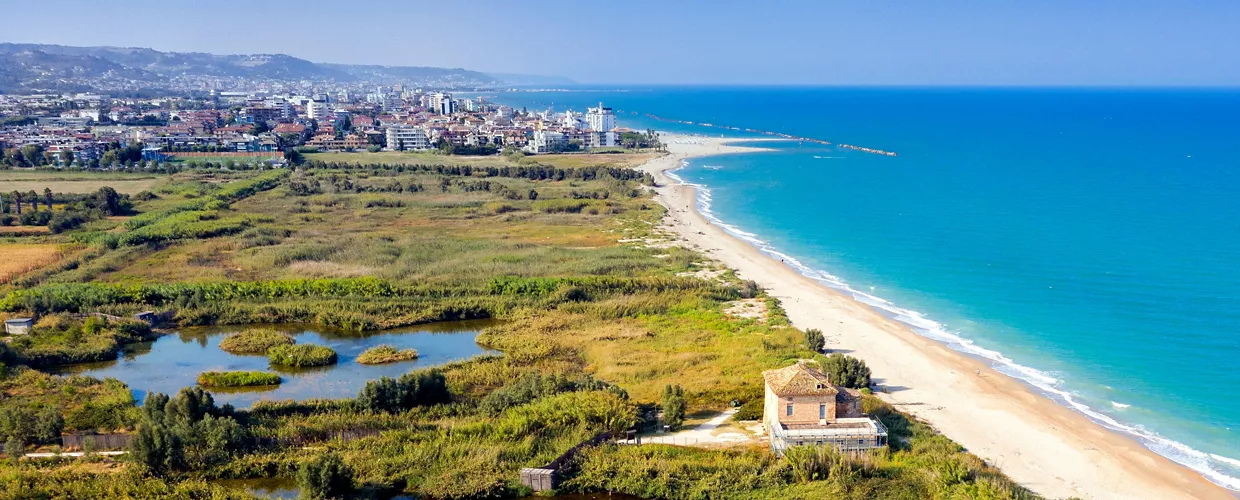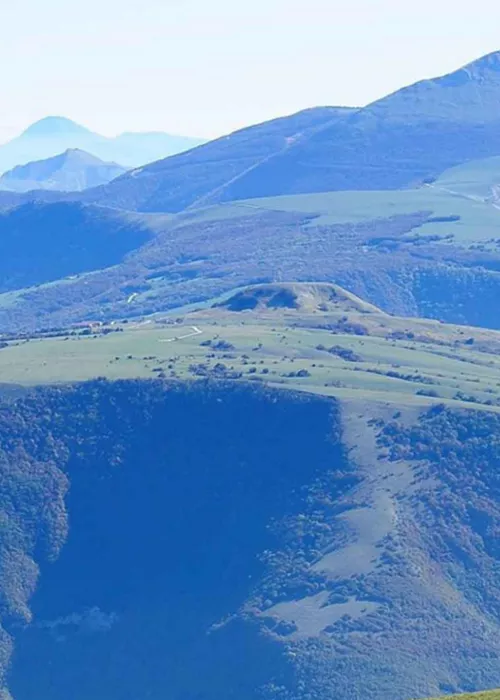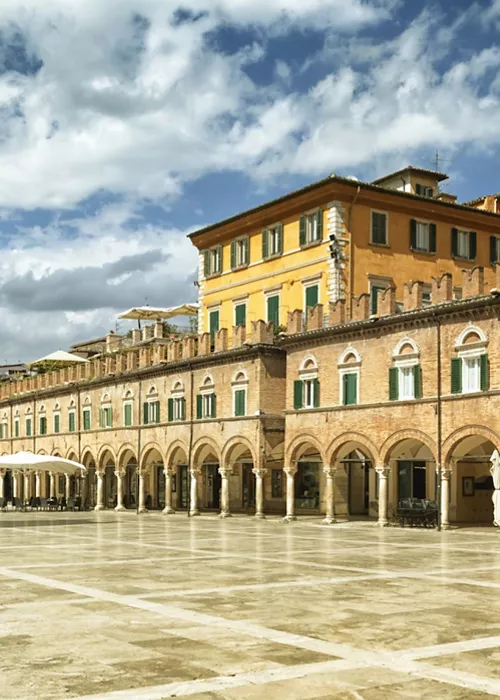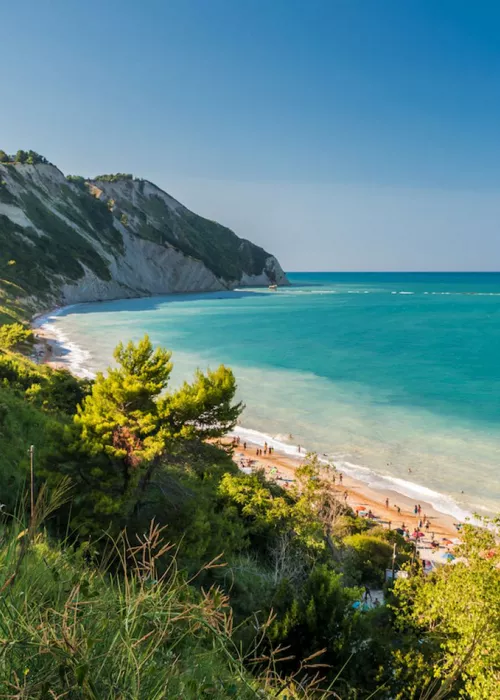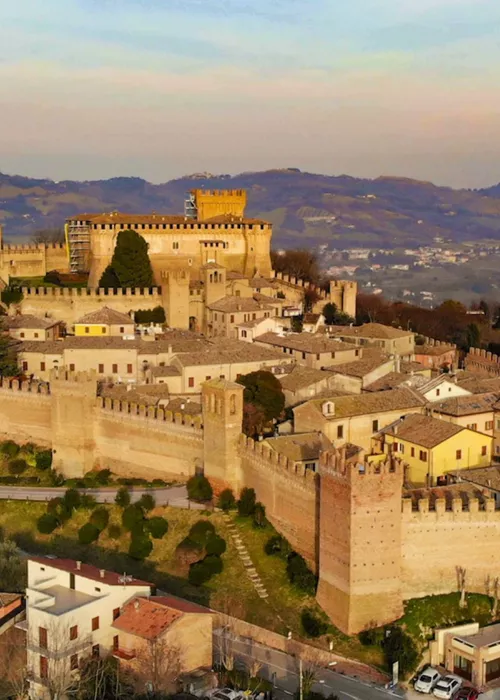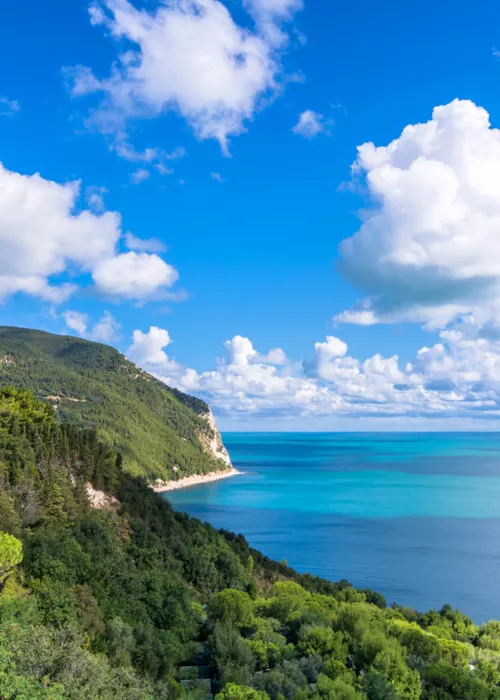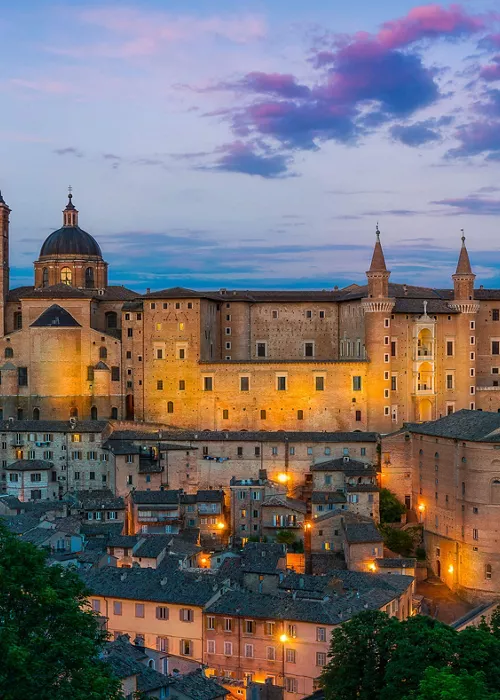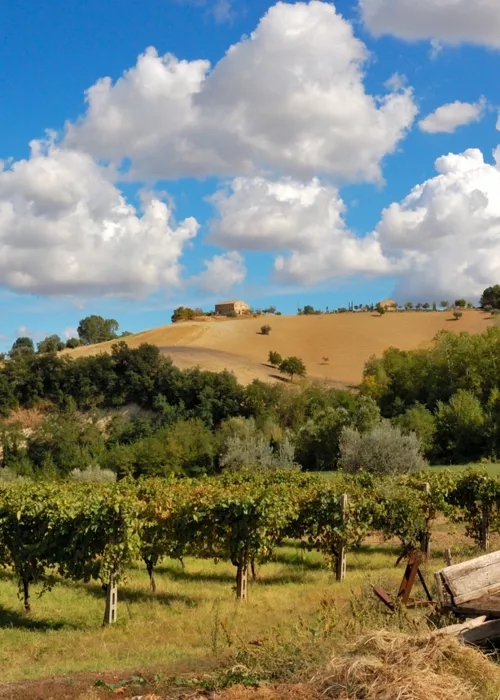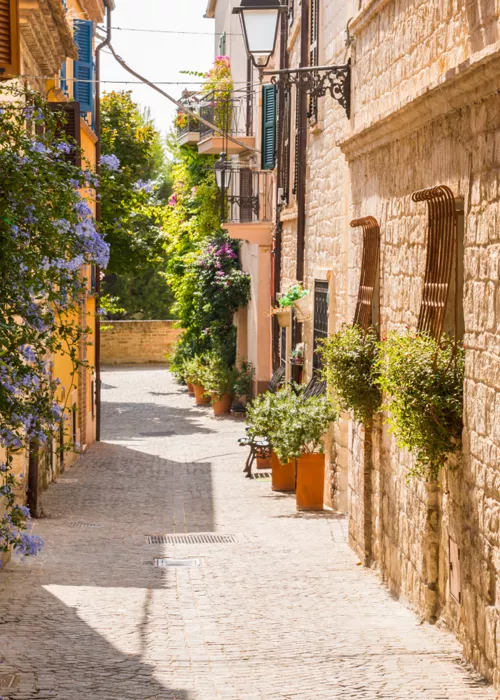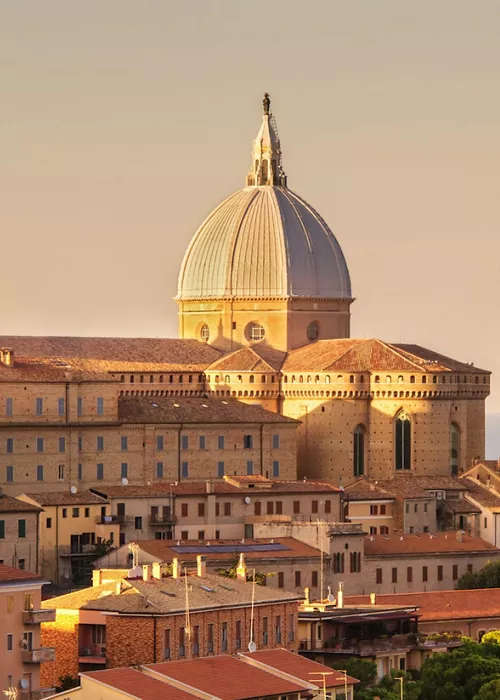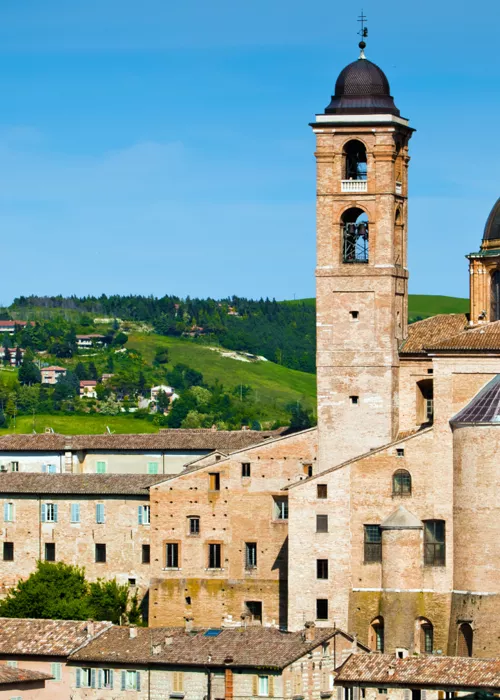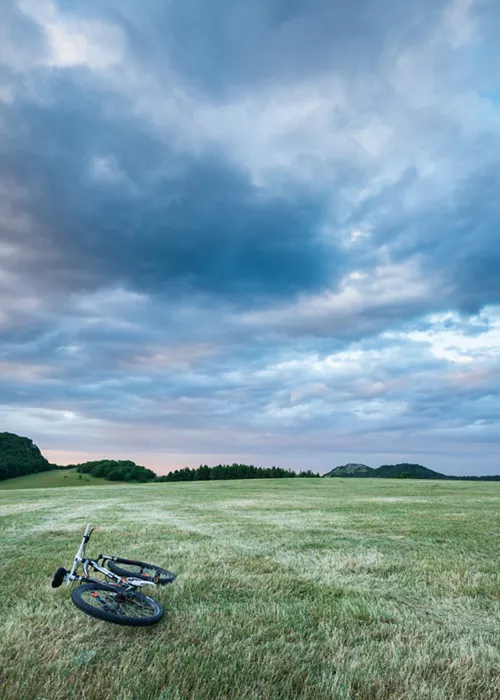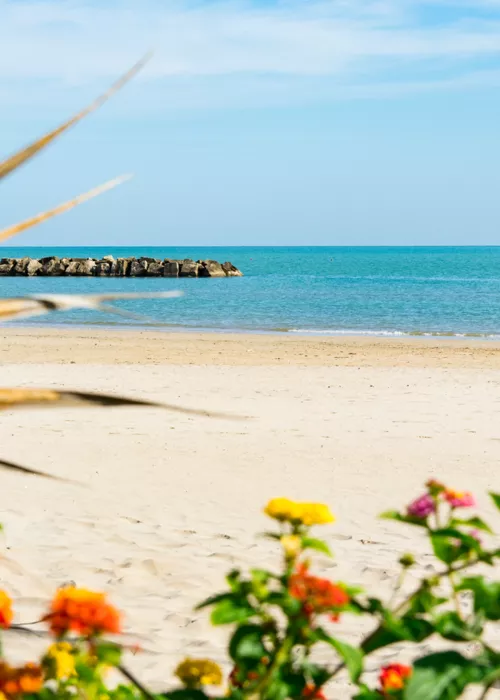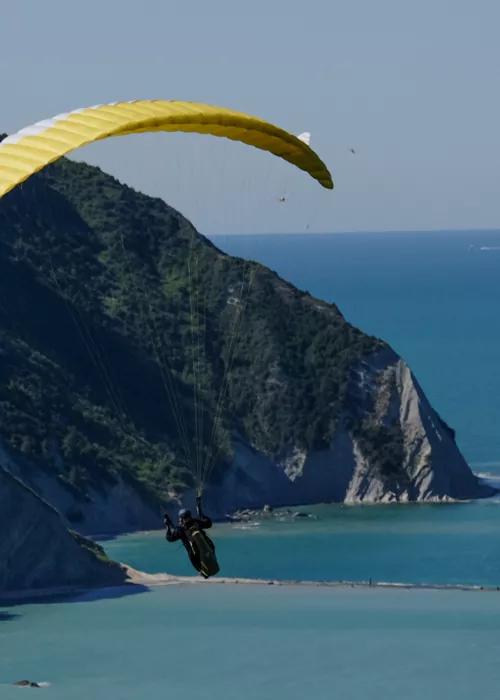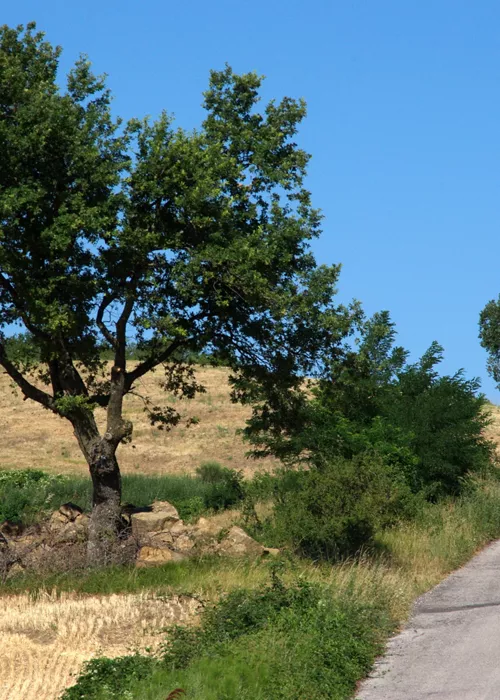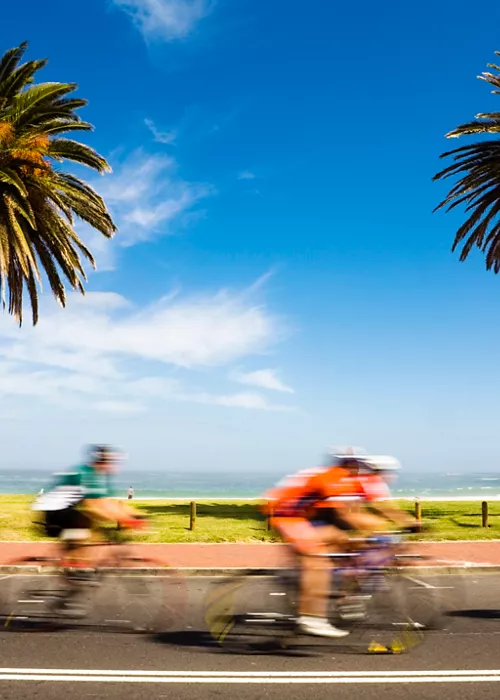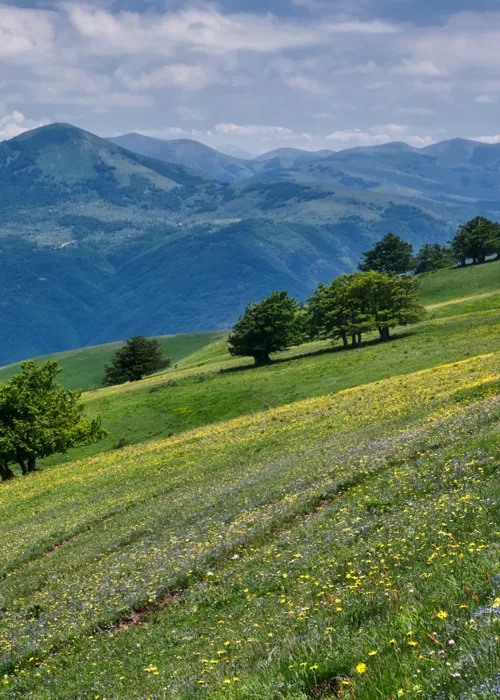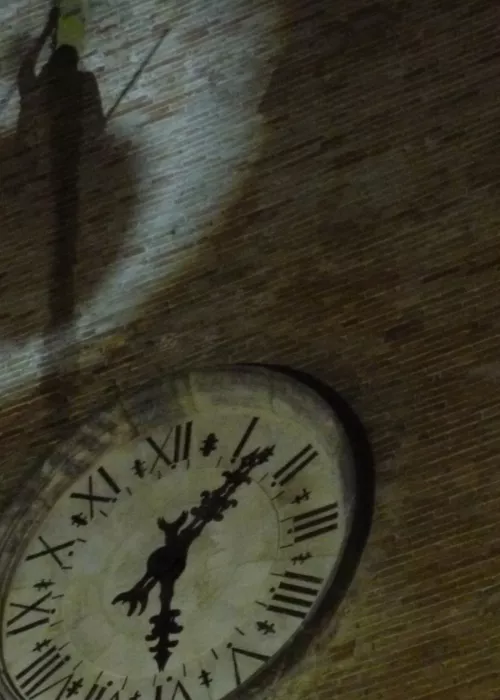Sentina Regional Nature Reserve is the smallest protected area in the Marche region, established in 2004. The reserve is characterised by a water and sand landscape stretching along 1.7 km of coast. The entire area covers approximately 180 hectares within the municipality of San Benedetto del Tronto, between the town of Porto d'Ascoli to the north and the Tronto river to the south.
Its morphology can be traced back to a coastal valley floor environment, entirely characterised by current and recent (Holocene) alluvial deposits. Due to its particular natural structure, it constitutes a homogeneous system of land, river and lake areas. Ancient evidence dating to the 1600s and 1860s also recalls the presence of a lake basin, gradually disappearing due to subsequent urbanisation and drainage works. Sentina is made up of unique environments like sandy shores, backdune wetlands and brackish grasslands, a rich and distinctive flora, now gone from most of the Adriatic coastline.
In the reserve, the birds of the region are present in abundant species, both resident and migratory. There are not many mammals on the reserve, due to the strong influence of human activity and the ecological isolation of the area. There are four species of amphibians and seven species of reptiles on the Sentina Reserve.
The wetlands include two small lakes:
the Salicornia - near the Tower on the Harbour, housing various lookout posts for bird watching.
the Cavaliere d'Italia - so called because the Cavalieri d'Italia and many other game species find food here. There are several birdwatching stations in the pond.
There is also a network of cycle and walking routes in the reserve. This territory lies at the crossroads between the Adriatic cycle route, running along the Italian side of the Adriatic Sea, and the Salaria cycle route, starting here and then heading towards Rome and the Tyrrhenian shore.
There are numerous paths within the reserve.
- the Cavatone – named after the 'Cavatone' ditch that determines the northern boundary of the reserve.
- the Antica Sentina – takes its name from the stretch of road that crosses what was once the ancient marshland giving the reserve its name.
- the Strëchì – named after the Cipolloni family, aka trëchì, who lived in the Torre sul Porto. The route retraces the ancient border of Marquises Laureati to the north and Marquises Sgariglia to the south.
- the Road to Olivo and Sina – named after the last inhabitants of the Tower on the Harbour.
- the Palazzo – takes its name from what was the centre of the district in the 20th century, a large block of flats belonging to Marquises Sgariglia, which took the name 'Palazzo' due to its generous size. the Pantiera – takes its name from what was once a vast stretch of brackish water in which various species of fauna found shelter, including ducks, capers, lapwings and black-winged stilts. There are birdwatching stations along the route.
- the Foce – adjacent to the mouth of the Tronto river, from which it takes its name.
- the Ndòndò – takes its name from a cottage that was home to the Cervellini family known as Ndòndò di Magnacascë. The cycle path that will cross the bridge over the Tronto river, currently being planned, will connect the Marche and Abruzzo regions in this section.
Area buildings include the harbour tower, built in 1543 as a watchtower.
Photo credit: Franco Cappellari



